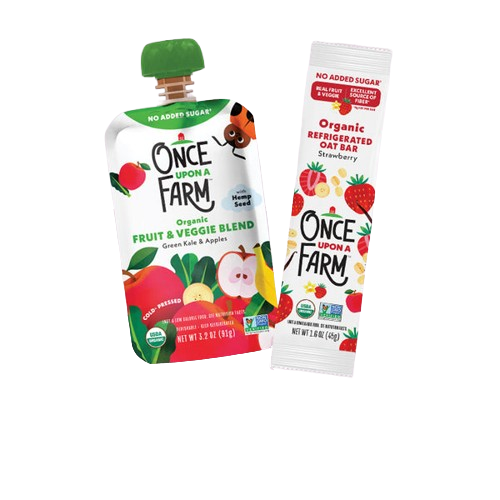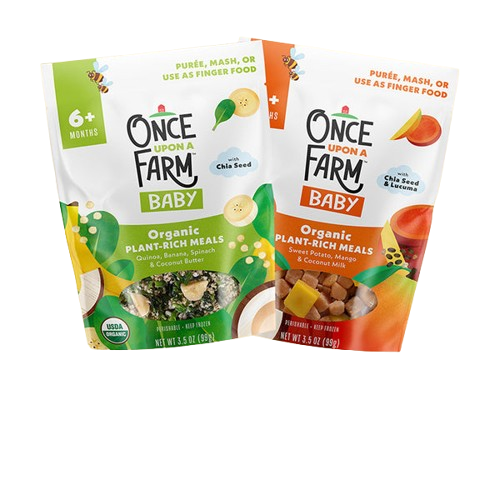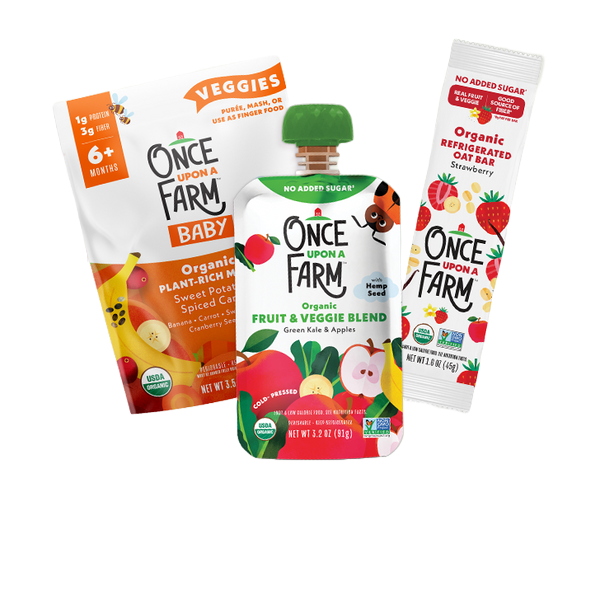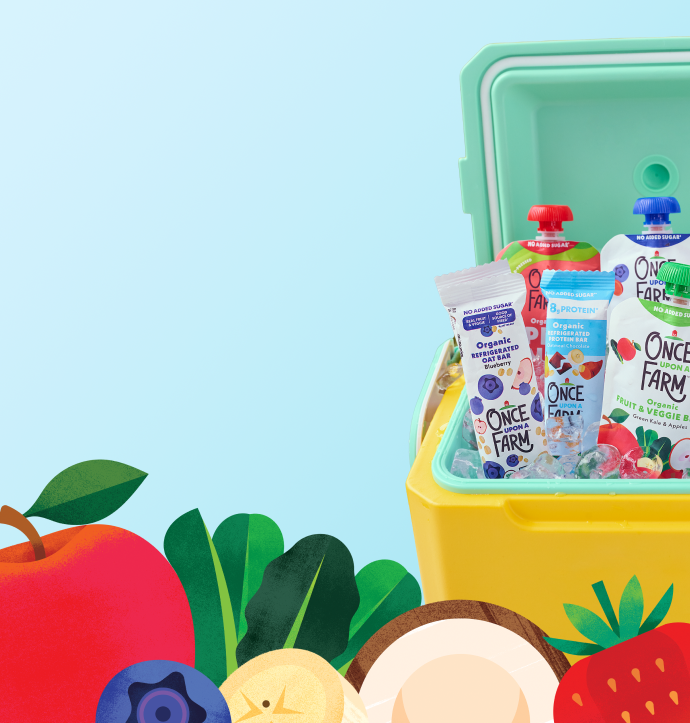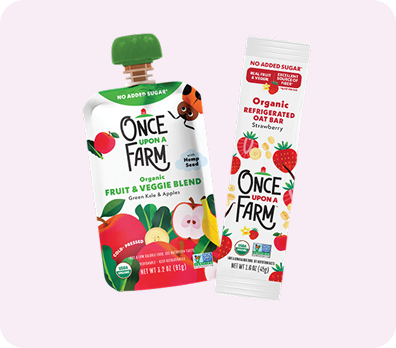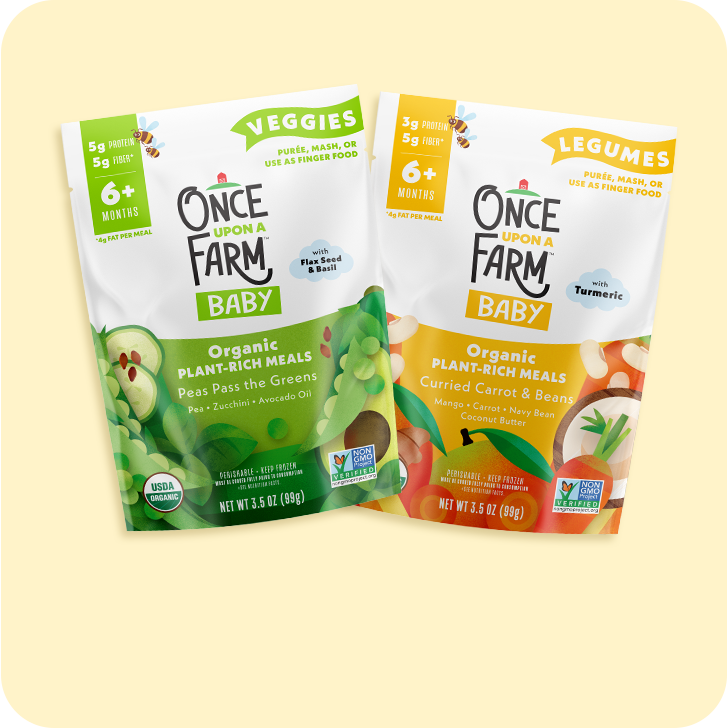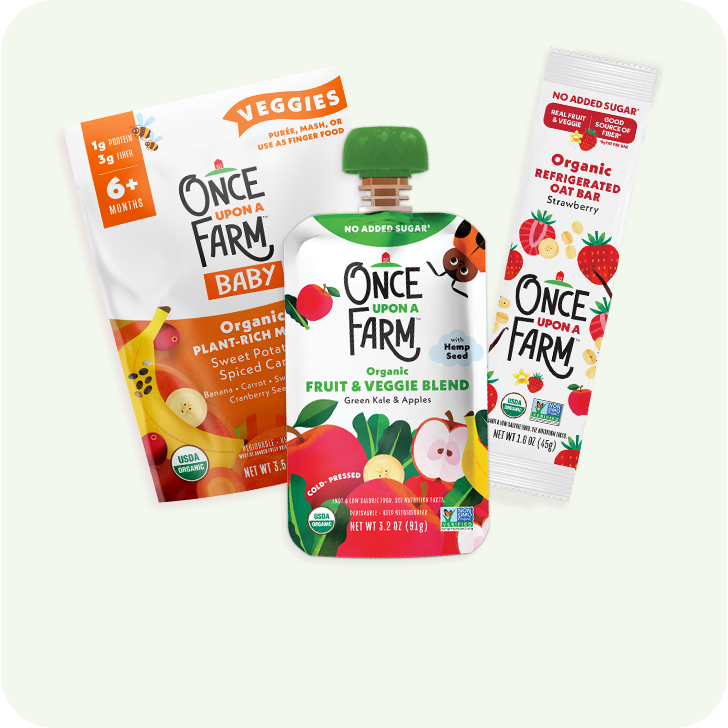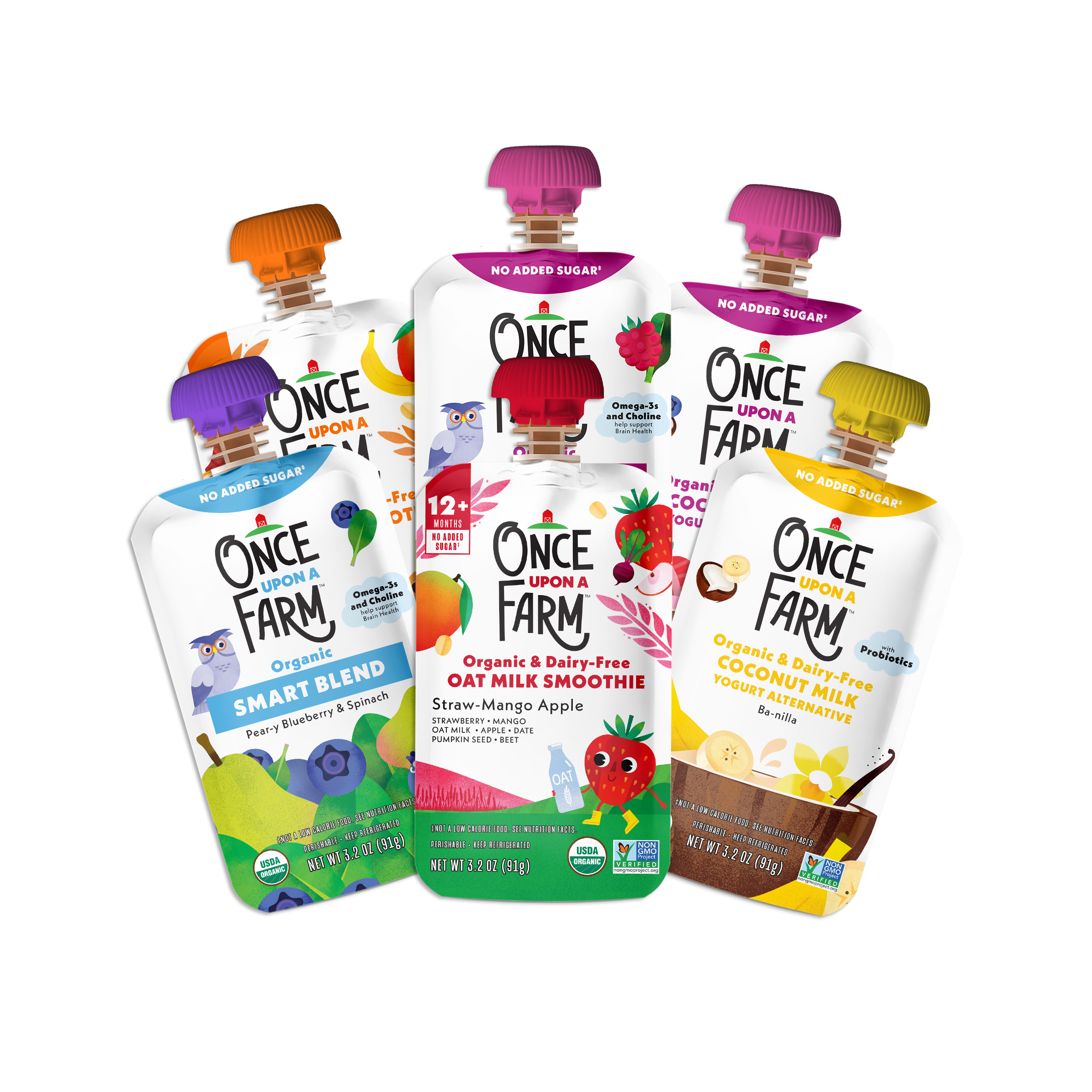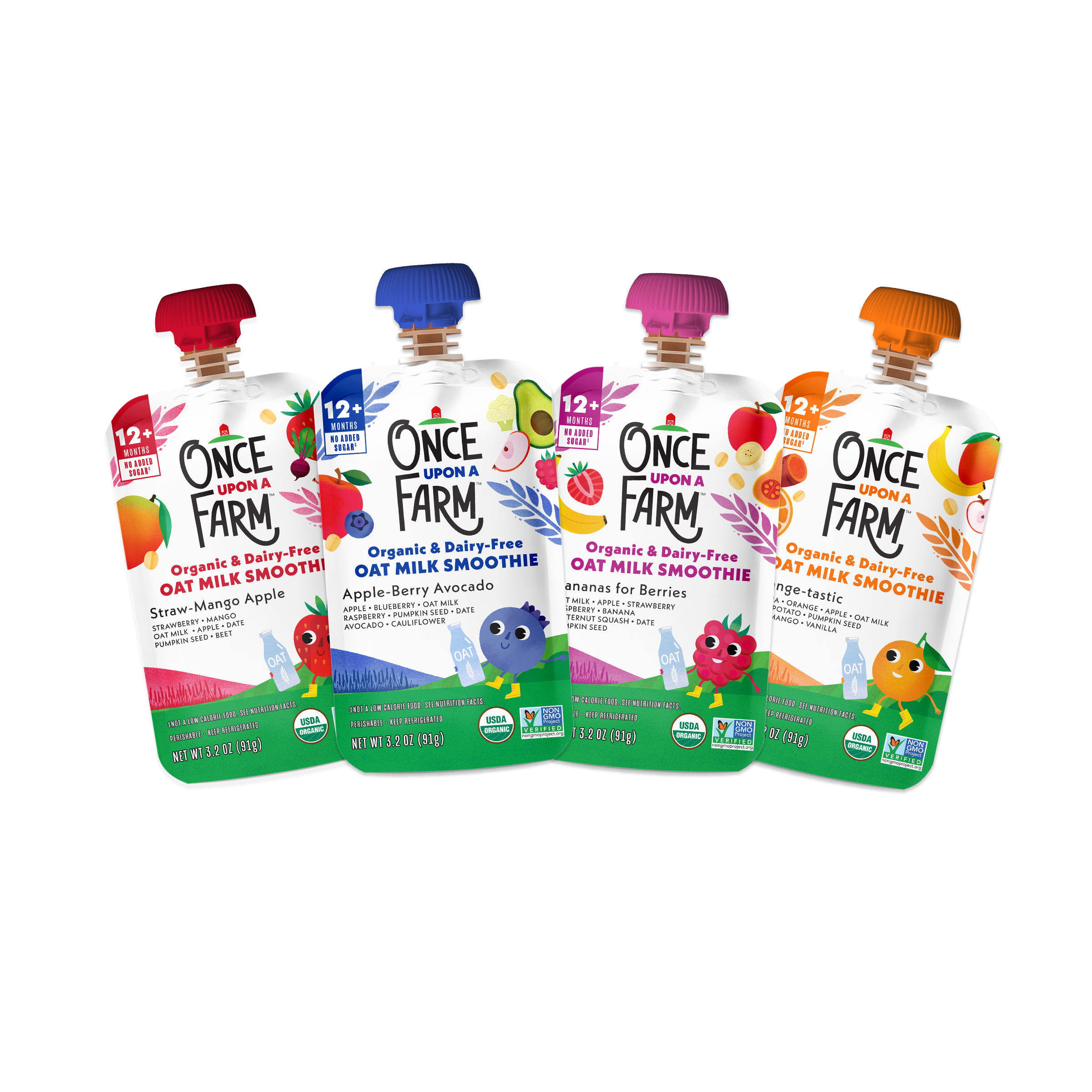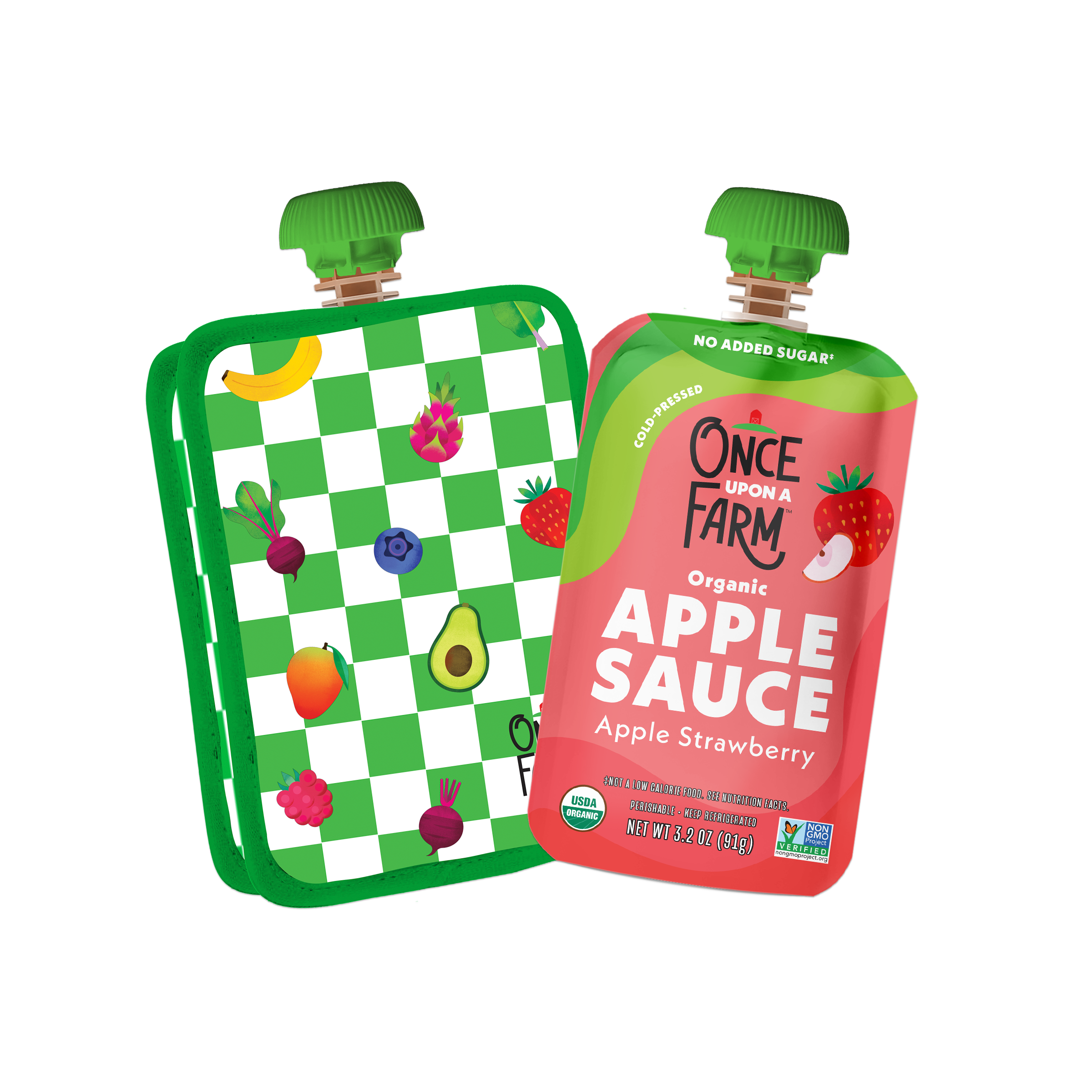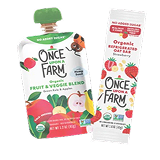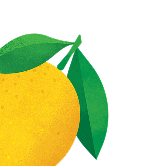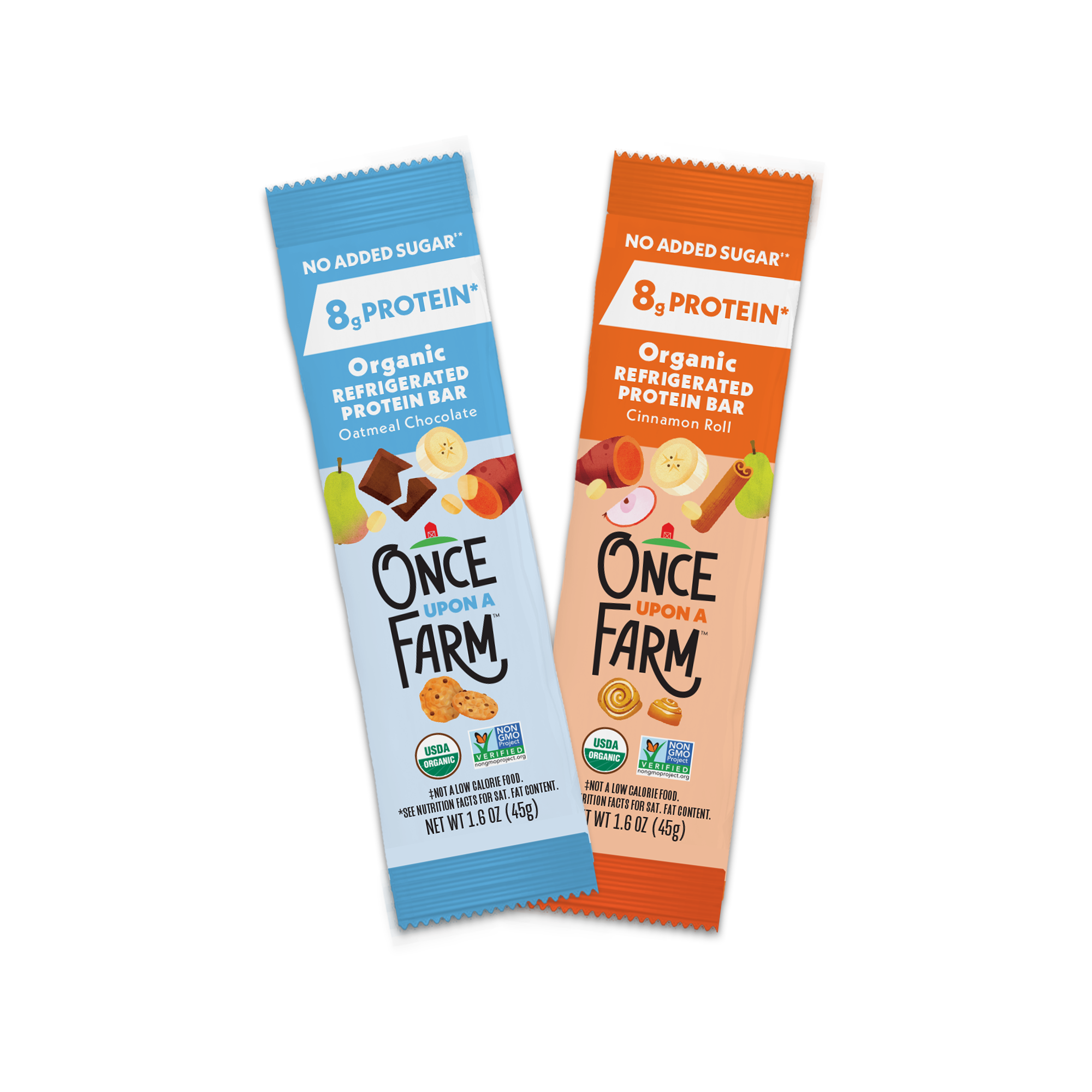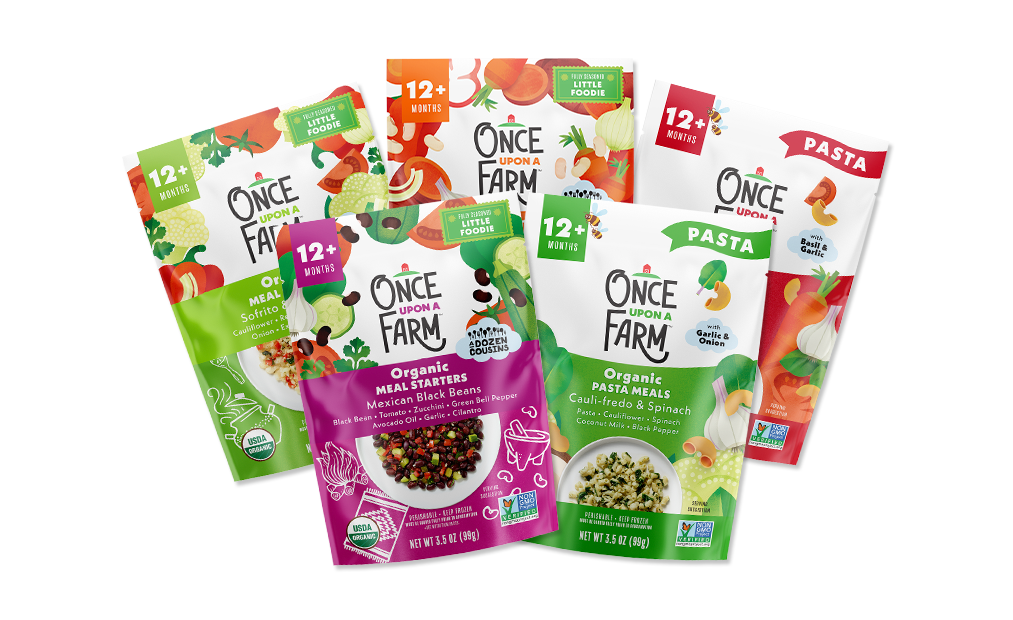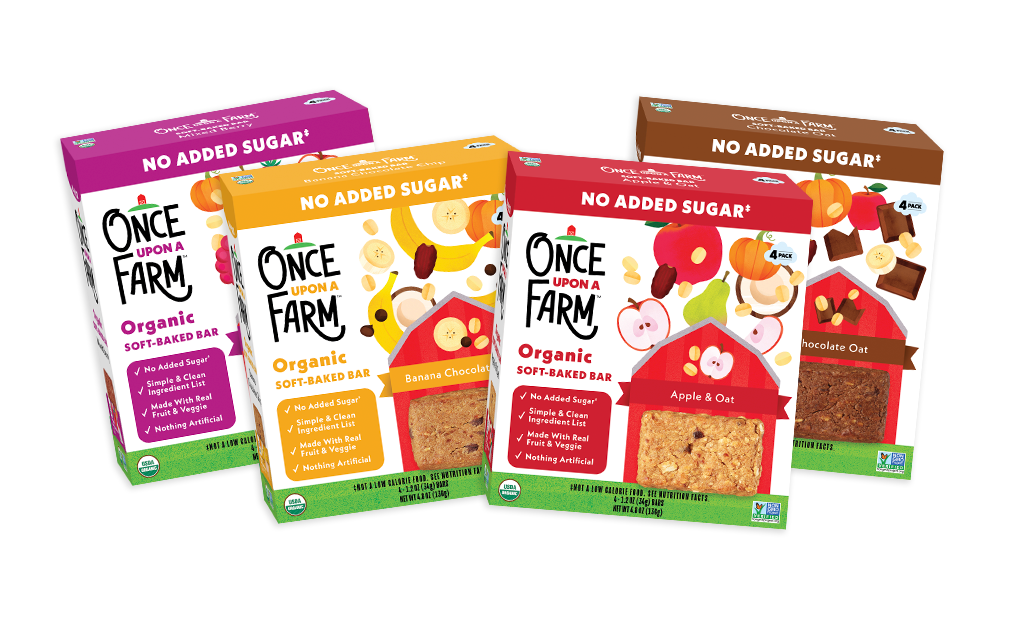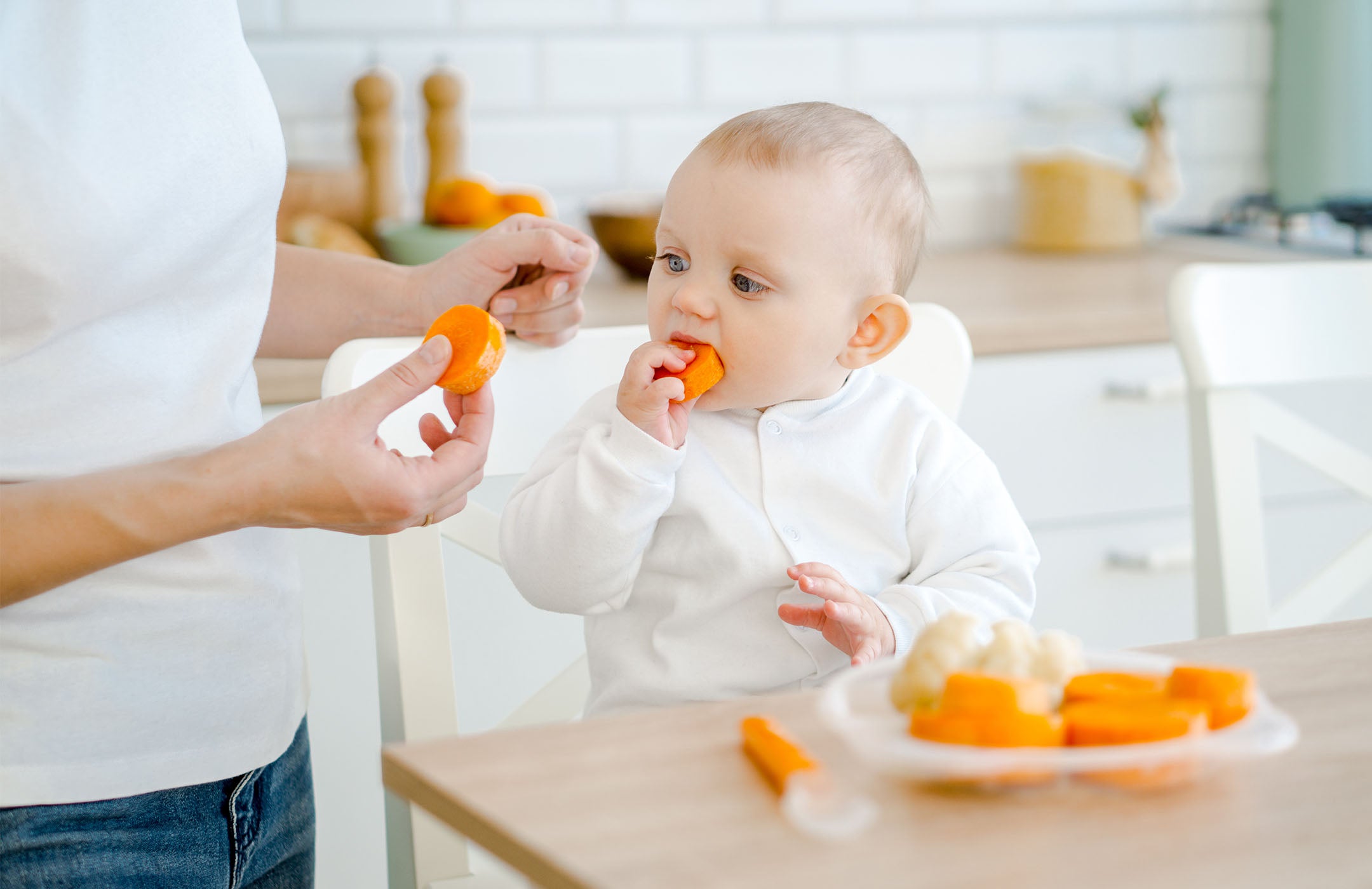So you introduced solid foods as purées at six months, as recommended by the American Academy of Pediatrics. And while your little one is slurping up those yummy purées like a pro, the question remains: when can babies have finger foods? While there is no set-in-stone answer, most babies are ready for a more solid bite between seven and eight months—some may even skip purées altogether (also known as baby-led weaning).
First things first, what is finger food?
Finger foods are any whole ingredient served in solid form. For babies, finger foods are either naturally soft enough to gum (like cut up strawberries or bananas) or prepared in a way that softens them enough to be eaten with little to no teeth (like steamed sweet potato or sautéed spinach). A good rule of thumb is to only serve what you could blend into a puree, as opposed to crunchy or chewy foods. As your toddler adapts to more foods and different consistencies, you can experiment with different textures.
When can babies have finger foods?
You’ll know your baby is ready to graduate from spoon-feeding to finger foods when they’ve developed a strong pincer grasp (or that pinching grip between the index finger and thumb—think of the motion you use to pick off the booger they’ve smeared onto your sleeve). Other signs that your baby or toddler is ready for finger foods are that they’re able to sit up unassisted and you see them making chewing motions with their gums even when eating purées. These skills are all crucial for safe finger food consumption. As always, consult with your pediatrician if you’re unsure if your child is ready.
Ideas for baby's first finger foods
We are often asked the question when can babies have finger foods, and now you know the answer. But even if your little one is a pinching, sitting up, chewing champion, it’s still important to start with the right kind of finger foods. Think of soft foods, mashable between the gums, and easy to cut into baby-bite-sized bits (half an inch or smaller) to avoid choking hazards. Start with foods that are easy to pick up to avoid frustrating new eaters—or try rolling slippery ingredients in cooked rice or quinoa to give them a little more grip.

